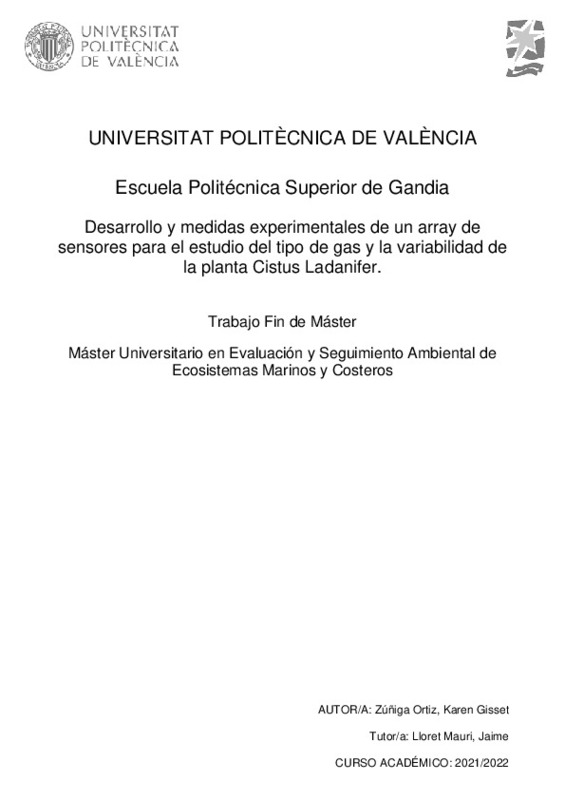JavaScript is disabled for your browser. Some features of this site may not work without it.
Buscar en RiuNet
Listar
Mi cuenta
Estadísticas
Ayuda RiuNet
Admin. UPV
Desarrollo y medidas experimentales de un array de sensores para el estudio del tipo de gas y la variabilidad de la planta Cistus Ladanifer.
Mostrar el registro completo del ítem
Zúñiga Ortiz, KG. (2022). Desarrollo y medidas experimentales de un array de sensores para el estudio del tipo de gas y la variabilidad de la planta Cistus Ladanifer. Universitat Politècnica de València. http://hdl.handle.net/10251/187941
Por favor, use este identificador para citar o enlazar este ítem: http://hdl.handle.net/10251/187941
Ficheros en el ítem
Metadatos del ítem
| Título: | Desarrollo y medidas experimentales de un array de sensores para el estudio del tipo de gas y la variabilidad de la planta Cistus Ladanifer. | |||
| Otro titulo: |
|
|||
| Autor: | Zúñiga Ortiz, Karen Gisset | |||
| Director(es): | ||||
| Entidad UPV: |
|
|||
| Fecha acto/lectura: |
|
|||
| Resumen: |
[ES] Cistus ladanifer L. pertenece a la familia de las cistáceas, es una especie nativa y extendida en la región mediterránea. Crece desde el nivel del mar hasta unos 1.500 m s. n. m. Este arbusto aromático produce una ...[+]
[EN] Cistus ladanifer L. belongs to the cistaceae family, it is a native and widespread species in the Mediterranean region. It grows from sea level to about 1,500 m a.s. n. m. This aromatic shrub produces an aromatic ...[+]
|
|||
| Palabras clave: |
|
|||
| Derechos de uso: | Reserva de todos los derechos | |||
| Editorial: |
|
|||
| Titulación: |
|
|||
| Tipo: |
|
recommendations
Este ítem aparece en la(s) siguiente(s) colección(ones)
-
EPSG - Trabajos académicos [5004]
Escuela Politécnica Superior de Gandia





![ZIP archive [ZIP]](/themes/UPV/images/zip.png)


